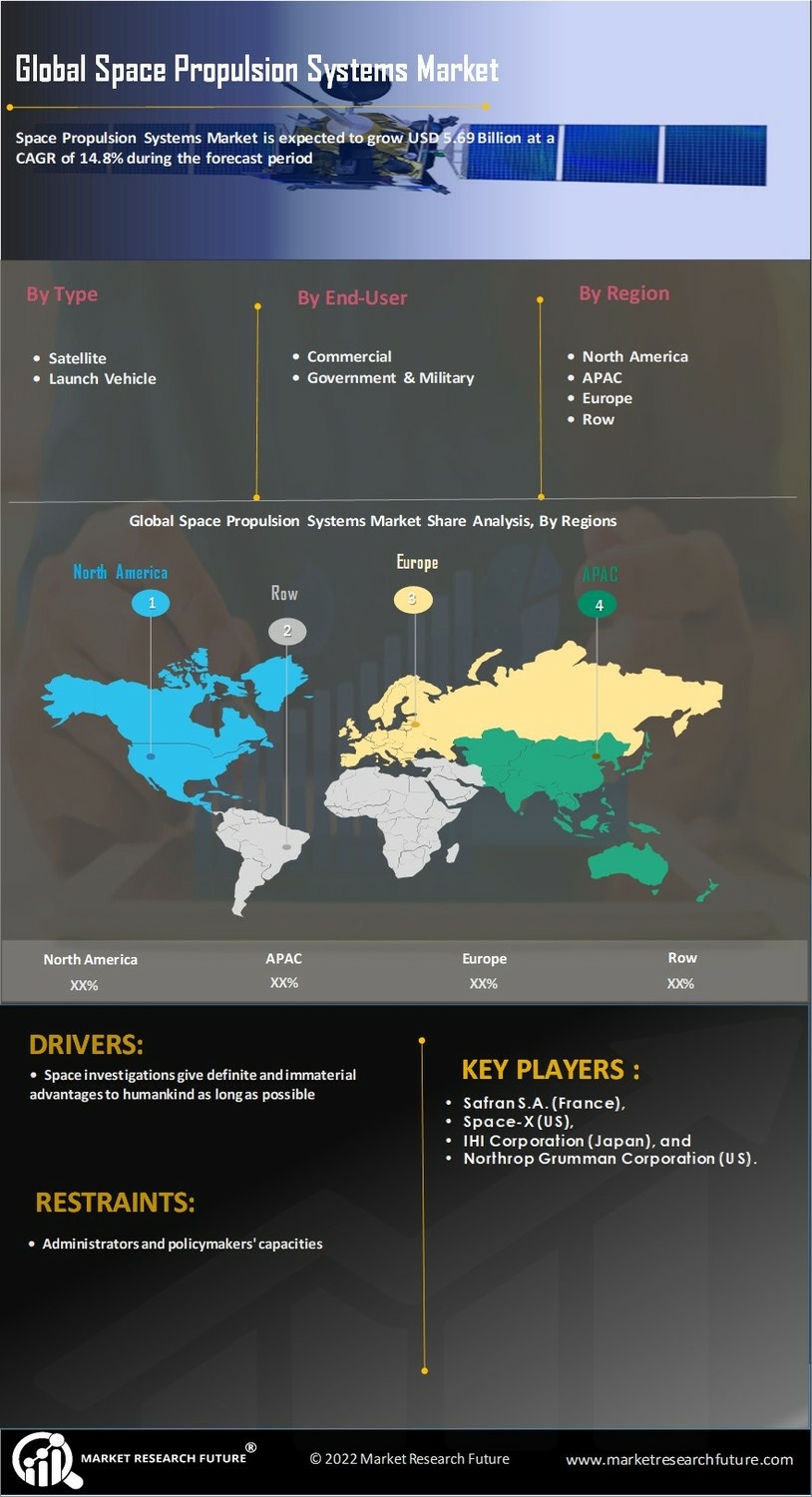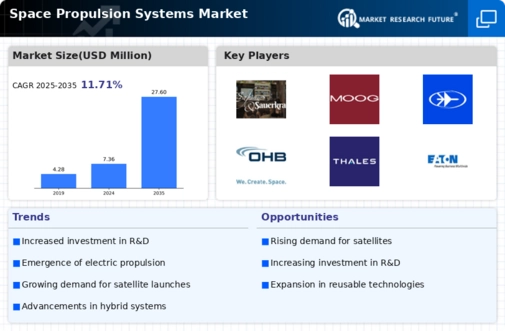Market Growth Projections
Rise of Commercial Space Ventures
The emergence of commercial space ventures is reshaping the Global Space Propulsion Systems Market Industry. Private companies are increasingly participating in space activities, driven by the potential for profit in satellite deployment, space tourism, and interplanetary exploration. Firms like SpaceX and Blue Origin are pioneering reusable rocket technologies, which significantly reduce launch costs and enhance market accessibility. This trend not only democratizes access to space but also stimulates competition, leading to rapid advancements in propulsion technologies. The growing commercial sector is expected to contribute to the market's expansion, aligning with the projected growth to 27.6 USD Billion by 2035.
Advancements in Propulsion Technologies
Technological innovations in propulsion systems are pivotal to the Global Space Propulsion Systems Market Industry. Developments in electric propulsion, such as ion and Hall-effect thrusters, offer higher efficiency and reduced fuel consumption compared to traditional chemical propulsion. These advancements enable longer missions and deeper space exploration, appealing to both governmental and commercial entities. As the industry evolves, the integration of hybrid propulsion systems is anticipated to enhance performance and versatility. The market's growth trajectory suggests that by 2035, it could expand to 27.6 USD Billion, reflecting the critical role of technology in shaping future space missions.
Increasing Demand for Satellite Launches
The Global Space Propulsion Systems Market Industry experiences a surge in demand for satellite launches, driven by the growing need for communication, navigation, and Earth observation satellites. As nations and private companies invest in satellite technology, the market is projected to reach 7.36 USD Billion in 2024. This demand is further fueled by advancements in miniaturization and the proliferation of small satellites, which require efficient propulsion systems. The increasing reliance on satellite data for various applications, including climate monitoring and disaster management, underscores the importance of robust propulsion systems in the global landscape.
Government Investments in Space Exploration
Government initiatives and funding for space exploration significantly influence the Global Space Propulsion Systems Market Industry. Countries are increasingly recognizing the strategic importance of space capabilities, leading to enhanced budgets for national space agencies. For instance, NASA and ESA are investing in next-generation propulsion technologies to support ambitious missions to Mars and beyond. These investments not only bolster national security but also stimulate economic growth through job creation in the aerospace sector. As a result, the market is poised for substantial growth, with a projected CAGR of 12.76% from 2025 to 2035, indicating a robust future for propulsion systems.
Environmental Considerations in Propulsion Systems
Environmental sustainability is becoming a focal point in the Global Space Propulsion Systems Market Industry. As awareness of space debris and the ecological impact of rocket launches increases, there is a growing demand for eco-friendly propulsion technologies. Innovations such as green propellants and reusable launch systems are gaining traction, as they mitigate the environmental footprint of space activities. Regulatory bodies are likely to impose stricter guidelines on emissions and waste management, prompting companies to adapt their propulsion systems accordingly. This shift towards sustainability may influence market dynamics, as stakeholders seek to balance operational efficiency with environmental responsibility.



















